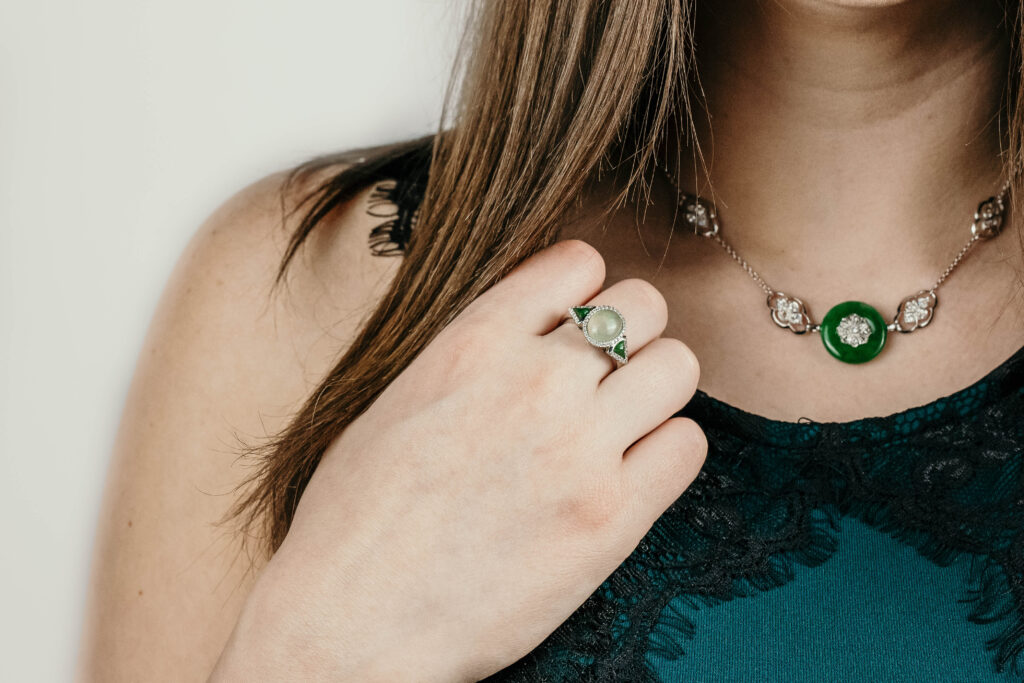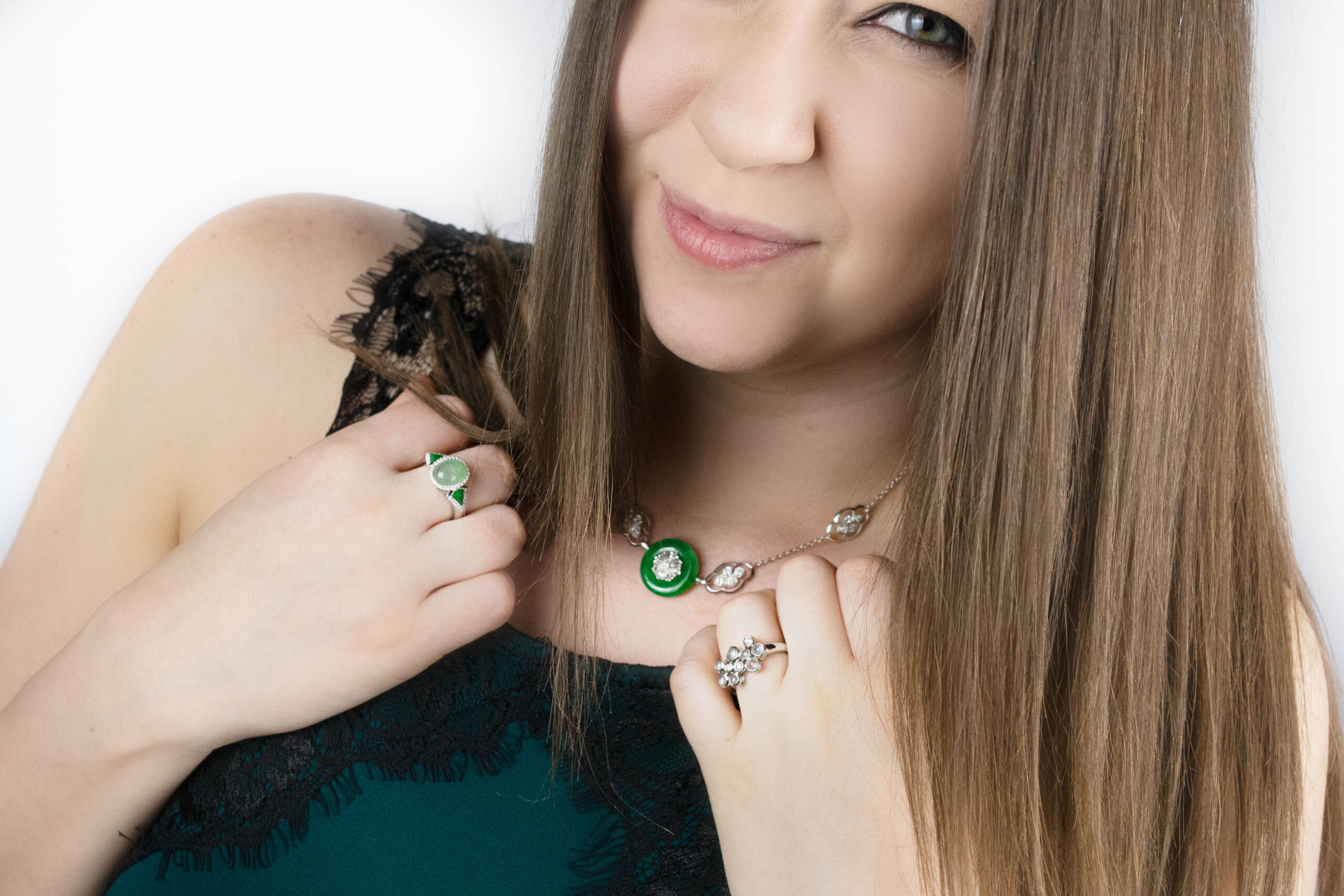Here it is! Copy-and-pasteable content for your Instagram Stories to educate your staff and customers on jade and increase engagement on your social media platforms.
A few tips before we get started:
- Instagram likes when your followers interract with you, so ‘stories’ with polls, quizzes, and questions are a must.
- It’s often recommended to post 1-10 stories per day, so don’t be afraid to “drag out” the content into multiple stories. For instance, you could start with a “Who wants to learn about jade” poll, then a quiz about a particular fact, and then follow up with 1 – 3 stories of photos or explanations.
- Pick a certain day of the week to post about jade and drag the facts out over the course of weeks/months. Ideas for days on which to highlight jade: Minerology Monday, Translucent Tuesday, Whiskey Jade Wednesday (lol this really only works if you’re focusing on red jade…but the word “whiskey” definitely gets peoples attention!), Fei Cui Friday (pronounce fay choi), Jade Saturday. You get the gist!
- Not included in this article: You can reach out to Jewels of the Trade for jade photos to share for “This or That” stories, the moveable rating bar, etc. (DM me on IG and I’ll hook you up with the link.

This is the list of Jade Facts I personally use for my own Instagram, @jewels_of_the_trade. You can copy and paste onto a Story or use the information for interactive content (recommended!)
- “Jade” is a term that refers to two different gemstones: Nephrite and Jadeite. Nephrite is the jade of Ancient China, and Jadeite hit the Chinese market in the 1700s and is considered the most valuable of the two (in jewelry) today.
- Almost all jadeite on the market comes from Burma. It has been found in other countries such as Japan, Russia, Guatemala, and the US, but not of significant quality or in notable quantity. This makes it very rare.
- Jadeite Jade actually comes in many colors! Green, red, yellow, lavender, white, black, and a colorless translucent variety called “Ice Jade.”
- Jadeite Jade is the 3rd toughest gemstone on the planet, behind Hematite and Nephrite Jade. Jadeite can be up to 24x tougher (harder to break) than diamond!
- Jadeite Jade can be treated with dye or polymer impregnation, which should ALWAYS be disclosed as it significantly compromises the durability/stability and value of the stone. Make sure that you buy natural, untreated jade or ‘A Jade.’
- Qing emperor, Qianlong, marched 100,000 soldiers on a campaign to find jadeite jade, or kingfisher jade (fei-ts’ui), in Burma in the 1700s because of it’s exceptional green hue and allure.
- Jade has had historical, religious, industrial, and economic significance to many cultures all over the world including the Mayan, New Zealand Maori, Swiss Lake Dwellers, Chinese, and more.
- Jade is not actually mined in China. As far as archaeologists can tell, it has always been imported. Jade is, however, cut in China as the cutters have learned how from their predecessors knowledge from thousands of years of cutting experience.
- While green is overall the most valuable color of all the jadeite jade colors, the value of jade is strongly determined by it’s translucence. So some ice jade pieces can be more valuable than some green jade pieces, depending on their translucence.
- For some gemstones, treatment can improve the durability and stability of the stone. This is the opposite in the case of jade. Treated jade, when acid-bleached and then impregnated with polymer/resin, is much weaker than natural jade. So instead of having exceptional toughness, treated jade is brittle. If the jade has been dyed, it is less stable as the dye will fade.
- The only way to detect polymer/resin impregnation in jadeite is with a spectrometer, which most jewelry stores and appraisers do not have. To determine whether or not your jade has this treatment, it will have to be evaluated by a grading lab (for instance, GIA) or someone like Mason-Kay, a jade wholesaler who offers lab testing services. Your stone can (usually) remain mounted, and this is typically not expensive and doesn’t take very long.
- Because jade cabochons are often set with the aid of jewelers epoxy, extensive exposure to water is not recommended for jade jewelry. Therefore, it’s not advised to put jade in the ultrasonic or under the steamer, and it’s not recommended to wear in the shower or — as with all jewelry — in the pool or hot tub.
- The Chinese prized jade over all precious metals and would even award top medals in jade instead of gold. To pay homage to this, during the 2008 Beijing Olympics, jade was incorporated into the winning medals.
- Jade (especially in finer qualities) is not usually calibrated. In fact, it’s not unusual for it to be irregularly shaped to make the best use of the rough
- Jade is not priced per carat.
- Jade is the state gemstone of Alaska.
For more content to help your store promote jade in-store, on your website and social media, check out these links:
How to Use the Mason-Kay Showroom

